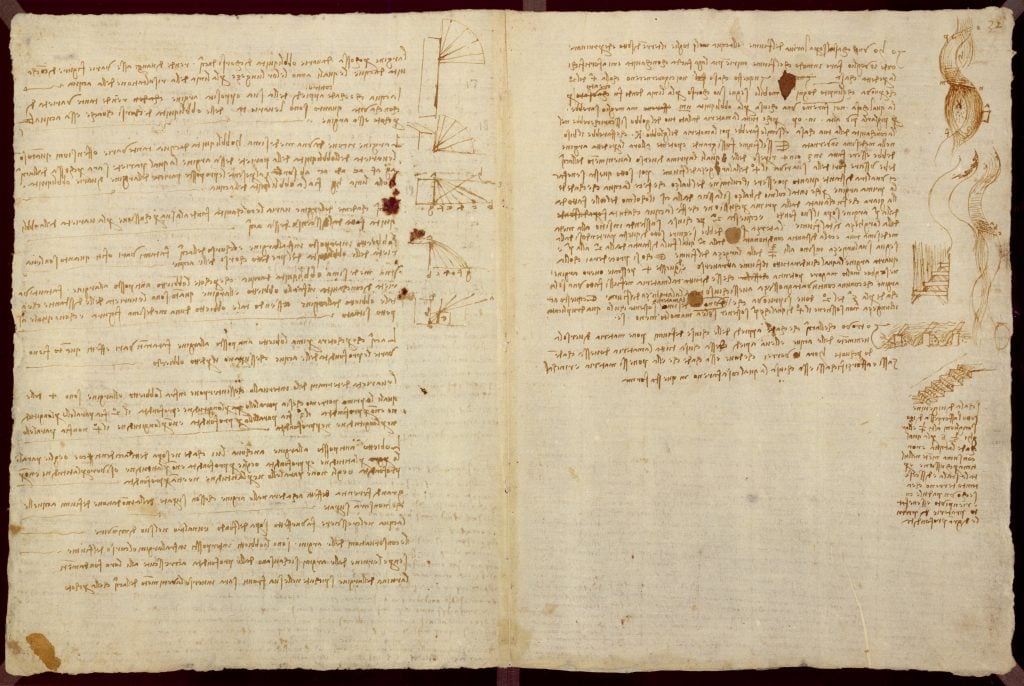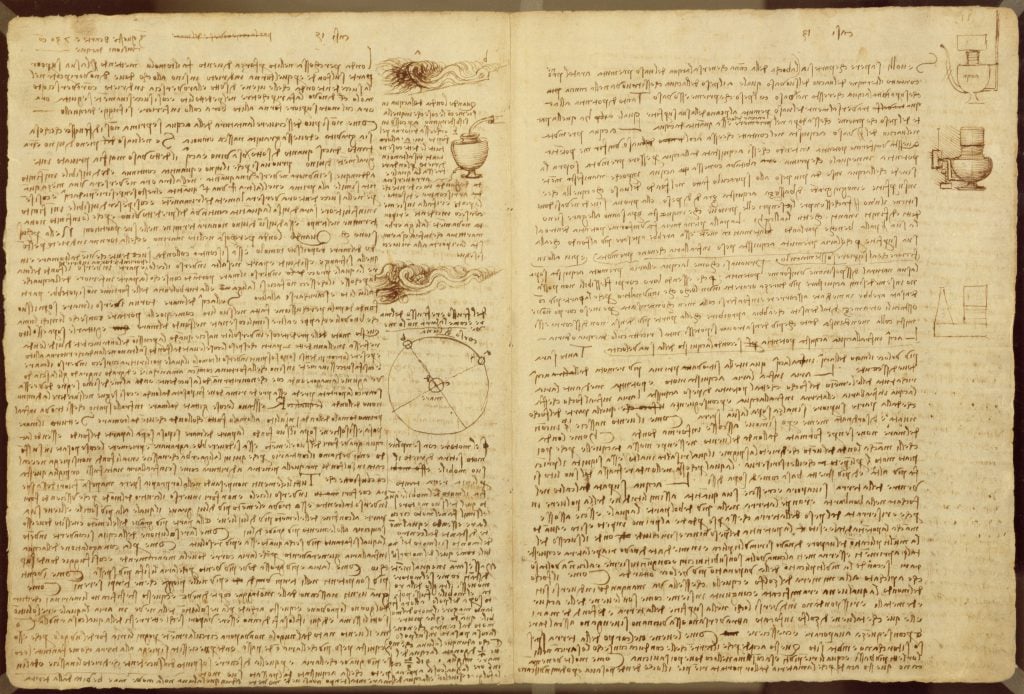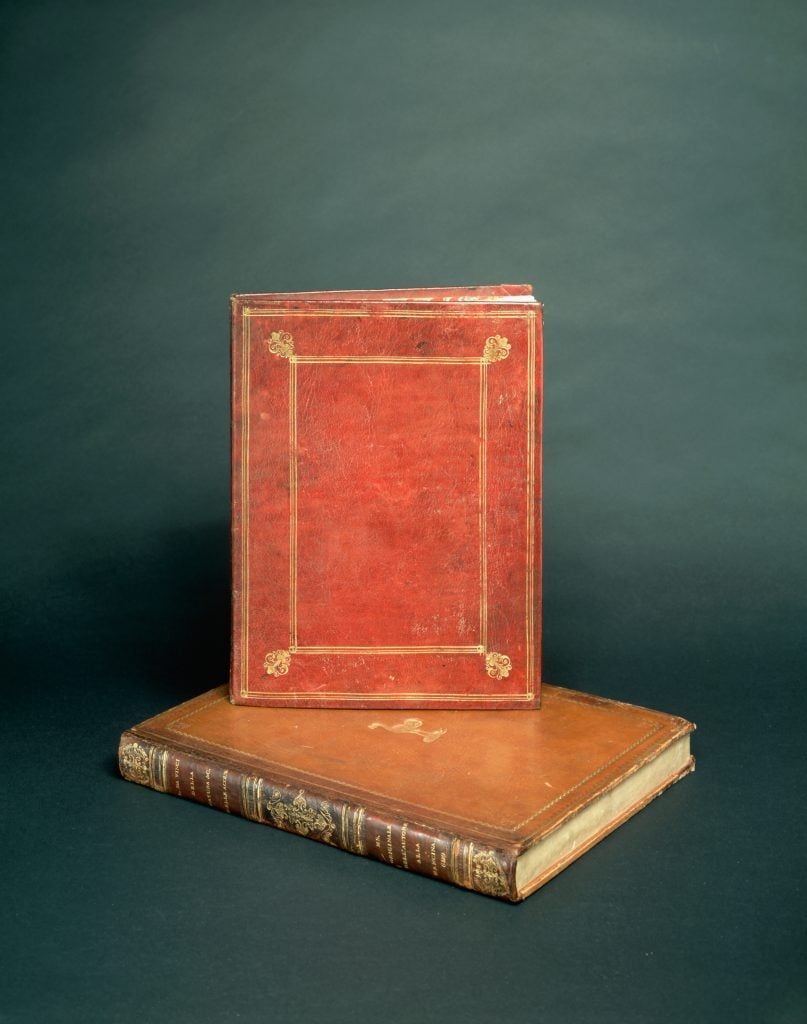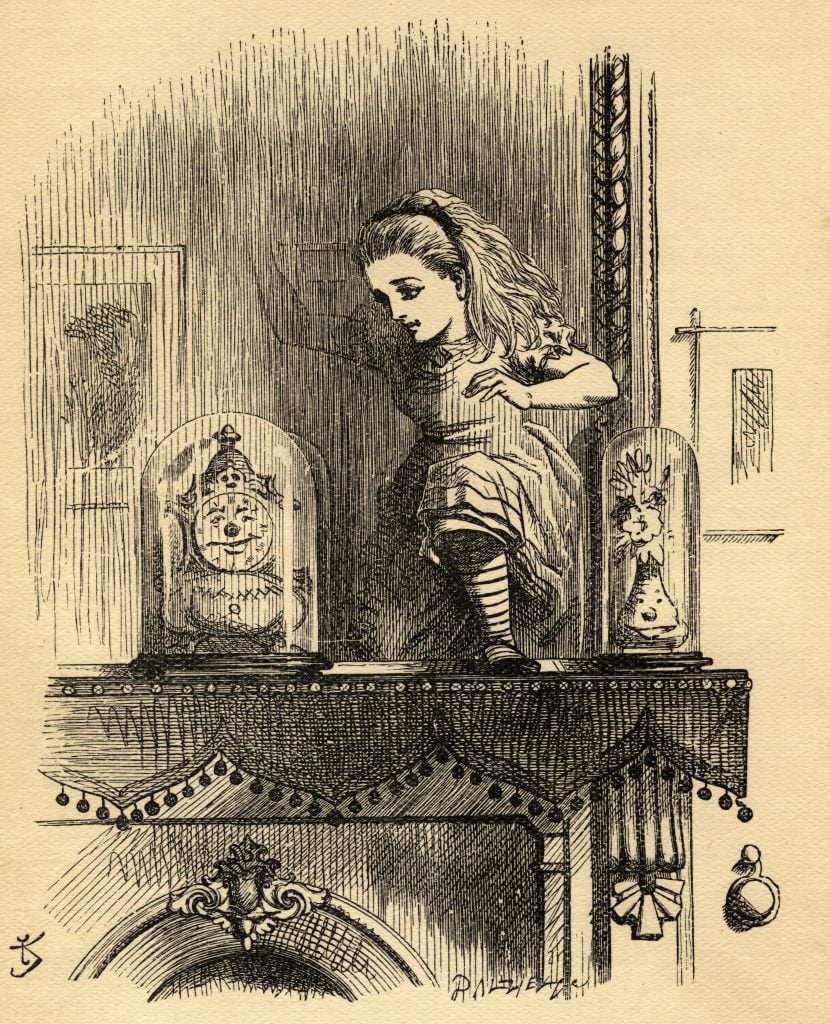Art World
Art Bites: Why Did Leonardo Use Mirror Writing?
⸮ɘƨɿɘvɘɿ ni ɘɈiɿw ɿɘɈƨɒm ɘɔnɒƨƨiɒnɘЯ ɘʜɈ bib γʜW

Leonardo da Vinci was known to write most of his notes (of which up to 28,000 pages have survived, across various notebooks and codices) in reverse. Each letter was reversed, making the writing perfectly readable when viewed in a mirror, hence the term “mirror writing”.
Several theories have been put forward as to exactly why the polymath used mirror writing. One is that the master was trying to make his notes harder to read, preventing people from stealing his ideas and keeping his scientific ideas from the Roman Catholic Church at a time when blasphemy was a crime punishable by expulsion and torture. But the fact that this “code” isn’t complex enough—especially in comparison to other ways Leonardo hid messages in his work—to effectively disguise his notes, has ruled out this theory for many experts.
As one blogger wrote in 2016: “Do you really think that a man as clever as Leonardo thought it was a good way to prevent people from reading his notes? This man, this genius, if he truly wanted to make his notes readable only to himself, he would’ve invented an entirely new language for this purpose. We’re talking about a dude who conceptualized parachutes even before helicopters were a thing.”

A page from the Codex Leicester, 1508-12, sepia ink on linen paper. Photo: Art Images via Getty Images.
The same blogger put forward another theory, too, not previously explored: that Leonardo wrote back-to-front in order to question the status-quo of left-to-right writing. “Simply put, languages aren’t fair. And Leonardo wanted to challenge that rigidity. ‘Why must I write from left to right?’ ‘Why are languages so inflexible, meant only for right-handers, and not left-handers?’ ‘Fuck the person who came up with this language!’” Thousands of pages of mirror writing seems like a high level of commitment, though, if it was simply the artist being purposefully contrary.
Others speculate that Leonardo wrote in reverse as an exercise to more thoroughly meditate on his thoughts. The mirror writing method would slow down the writing process, increasing the quality of the master’s reasoning and aiding with memory retention.

Tooled and embossed 17th-century clamshell box and leather binding of Leonardo’s Codex Leicester. Photo: Seth Joel/Corbis/VCG via Getty Images.
The most widely accepted theory is that Leonardo—who was left-handed—wrote in reverse in order to prevent smudging his notes. He was known by his contemporaries as “mancino”, meaning left-handed, and authenticators look for signs of left-handedness when examining potential Leonardo works.
This wouldn’t be the only way in which the genius was averse to mess. He viewed painting as a superior art form to sculpture, partly down to the messiness involved in the creation of sculptures. (All that marble dust!) However, despite the risk of messiness, the master did write in the standard left-to-right way when producing texts intended to be read by others.
Leonardo isn’t the only famous figure to use mirror writing. Lewis Carroll, the mathematician and author of Alice’s Adventures in Wonderland (1865), used mirror writing in his sequel novel Alice’s Adventures Through the Looking Glass and What Alice Found There (1871), in which the protagonist Alice has to hold a poem—the Jabberwocky—up to a mirror in order to read it. Carroll is believed to have used reverse writing for its novelty, and as a way to entertain his readers. He apparently had to be discouraged from having several pages of Through the Looking Glass printed in mirror writing.

Alice in the Looking-Glass House, illustration by Sir John Tenniel, 1820–1914. From the book Through the Looking-Glass and What Alice Found There by Lewis Carroll. Published, London 1912. Photo: Universal History Archive/Getty Images.
It seems unlikely that a definitive answer will be found for why Leonardo used mirror writing .
.wonk reven lliw ew spahreP
What’s the deal with Leonardo’s harpsichord-viola? Why were Impressionists obsessed with the color purple? Art Bites brings you a surprising fact, lesser-known anecdote, or curious event from art history. These delightful nuggets shed light on the lives of famed artists and decode their practices, while adding new layers of intrigue to celebrated masterpieces.





